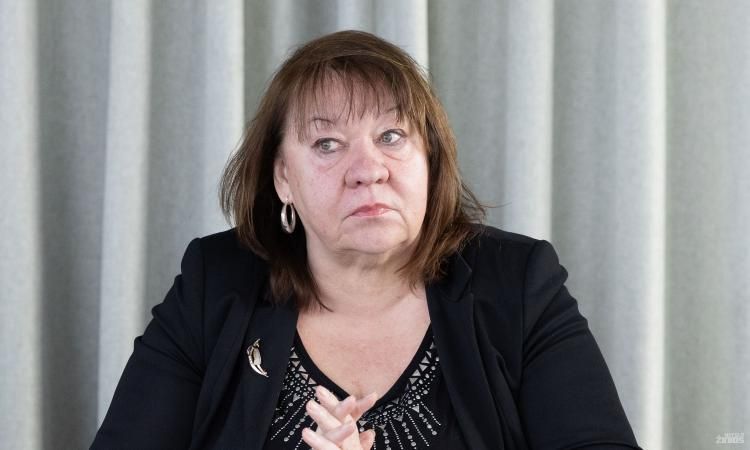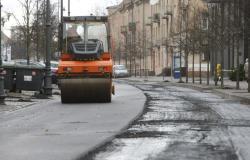“Invest Lithuania”. Photo of Judita Grigelytė (VŽ).
Lithuania no longer has the competitive advantage it once had due to lower labor costs. The supply of suitable locations and infrastructure for investors also poses challenges, so the competitiveness of the Lithuanian economy is experiencing challenges and is decreasing in the region. Accordingly, Lithuania lost 20 large investors in 7 years, the foreign investment promotion agency “Invest in Lithuania” revealed.
In the last seven years, due to the inability to offer a suitable location and infrastructure, Lithuania lost 20 potential foreign investors who would have invested about 1.2 billion. EUR and created 5,000 jobs, according to the analysis of the investment promotion agency “Invest in Lithuania”.
“Since 2016 until 2023 we lost 20 investments because we could not offer a plot or ready infrastructure. We could have that factory, that client in Lithuania, but we had nothing to offer and he just turned around and left,” Elijus Čivilis, CEO of Invest in Lithuania, told reporters on Wednesday.
[{“title”:”„Investuok Lietuvoje“ vadovas apie tai, kodėl „Rheinmetall“ pasirinko Lietuvą ir kokių partnerių ši įmonė ieško”,”url”:”https://vz.lt/finansai-apskaita/2024/04/18/investuok-lietuvoje-vadovas-apie-tai-kodel-rheinmetall-pasirinko-lietuva-ir-kokiu-partneriu-si-imone-iesko”,”category”:”PREMIUM”,”profiles”:[1019,1020,1027,1067,1633,1655,1660,1670,1872,1873,2097]}]
Marius Stasiukaitis, head of the strategy of “Invest in Lithuania”, also told journalists on Wednesday that Lithuania’s competitiveness model was based on low costs for a long time, and this also applies to attracting investments.
“Labour costs were significantly lower than in the West or even in our region, but we no longer have this advantage. Many countries in our region can offer lower labor costs,” explained M. Stasiukaitis.
“We’re just not going to be a competitive location for low labor cost manufacturing and naturally those industries will move to other locations,” he said.
Having analyzed the prospects of the country’s economy, “Investuok Lithuania” on Wednesday presented guidelines on how Lithuania can reach the economic level of Northern European countries by 2050.
“Looking at Lithuania’s economy, we see that there are certainly many things that should be prioritized here and now in order to maintain Lithuania’s growth trajectory. We no longer have assumptions that this growth will remain (…), we have to admit that we are in a new reality”, E. Čivilis told journalists.
According to the agency’s assessment, the growth potential of Lithuania’s economy is decreasing, and it will be more and more difficult for the country to attract investments in the future.
According to M. Stasiukaitis, we have a goal until 2050. to reach the level of development of the Nordic countries, but with current tactics it is not feasible.
“Prosperity is not created by low costs, but by competencies and specialization. “Currently, in the production sector, we are 3-4 times behind the Nordic countries in our productivity, and 2.5-3 times in wages,” he warns.
We compete with our neighbors for FDI
According to “Invest in Lithuania” analysts, in the competition for direct foreign investments, Lithuania lags behind its main competitors – Poland, Hungary, Romania – which concentrate large funds on attracting investments.
“Since the beginning of the war, a lot of black swans have appeared in Ukraine. Those swans are inflation, energy prices, disrupted supply chains,” said E. Čivilis.
“We have long positioned ourselves as a crossroads between East and West. “Suddenly, we became some kind of periphery, limited by unfriendly neighbors who cast a shadow,” he said.
Rūta Skyrienė, the head of the association “Investuotųi forumas”, also speaks about the need to make serious, long-term perspective-oriented decisions.
According to her, Lithuania must ask itself a very important question: how can we distinguish ourselves from other countries in the region? What can be our competitive advantage?
“I won’t say anything new – we are a small nation, so we can only compete with our knowledge, competences, talents, or otherwise – quality”, said R. Skyrienė.

In the modern world, it is created with science, innovative products and services, robotics and automation solutions.
“We have enough examples to prove that we have a lot of potential here. The fundamental question is, are we doing enough to properly expose and realize it? Today, the answer would be negative”, R. Skyrienė added.
There is a lack of suitable plots
In the presented guidelines, the agency also indicates that Lithuania should develop the infrastructure of plots and buildings needed for production investments, and develop free economic zones. According to “Invest in Lithuania”, the country lacks developed large plots of land – larger than 20 hectares.
“The practice of the last few years shows that large-scale production projects require increasingly large plots with developed infrastructure, sometimes reaching 70-100 hectares or even 300 hectares and more,” the agency says in its analysis.
Invest in Lithuania predicts that by 2030 Lithuania will be able to offer investors a total of 1,320 hectares of free plots: two larger than 100 hectares, four plots of 50-100 ha each, 10 – from 20 to 50 ha, 15 – from 10 to 20 ha and 30 to 10 ha plots.
The future is high value-added production
According to E. Čivilis, Lithuanian industry, the high-tech sector, and the regions of the country are experiencing challenges.
According to M. Stasiukaitis, in order to maintain competitiveness, the Lithuanian industry will have to reorient itself to the production of high added value, to develop innovative products.
“This requires financing and assistance for the transformation of companies according to the good practices of other countries,” said the head of the strategy of “Invest in Lithuania”.
The fact that Lithuania needs to pay more attention to the development of high technologies is also confirmed by the numbers. in 2021 productivity in these sectors was about 67% higher than in others.
Salaries in such workplaces are also well above the national average. Unfortunately, this reserve remains unused. Share of employees in high-tech sectors in Lithuania in 2022 was only 4.6% – in Estonia, the share of such employees was almost one and a half times higher.
[infogram id=”b0f9f674-fcc3-4a32-a614-04b158acf1b1″ prefix=”EmF” format=”interactive” title=”Copy: TUI 2014-2023 metais”]
The agency also proposes to create mechanisms for subsidies or preferential loans to promote the robotization of companies.
According to M. Stasiukaitis, the potential of regions in Lithuania is “highly unrealized”, where specialized centers of advanced production could be developed. However, this requires significantly more investment than has been attracted historically.
Giedrius Dzekunskas, head of the Lithuanian branch of Danske Bank and chairman of the board of Invest in Lithuania, pointed out that in the National Progress Plan of Lithuania we have provided for priority sectors – ICT, life sciences, engineering industry – and they are increasingly competing for quality and competences.

“Their cultivation is the only sustainable way for Lithuania. The country’s development trajectory can only be accelerated by access to the latest competences and technologies, and new jobs created mean taxes paid and high salaries”, added G. Dzekunskas.
According to the forecasts of “Invest in Lithuania”, if Lithuania’s productivity grows as it is now – 2% annually – the country’s gross domestic product (GDP) would reach 91 billion by the 2050s. Eur. At that time, if annual productivity growth of 3.8% is achieved, the GDP could increase to 161 billion. Eur.
Lithuania’s nominal GDP in 2023 reached 72 billion at the end Eur.
Choose the companies and topics you are interested in – we will inform you in a personal newsletter as soon as they are mentioned in “Verslo žinės”, “Sodra”, “Registrų centrum”, etc. in the sources.
Theme “Finance”
Tags: price competition Lithuania lost large investors billion years EUR investments
-








